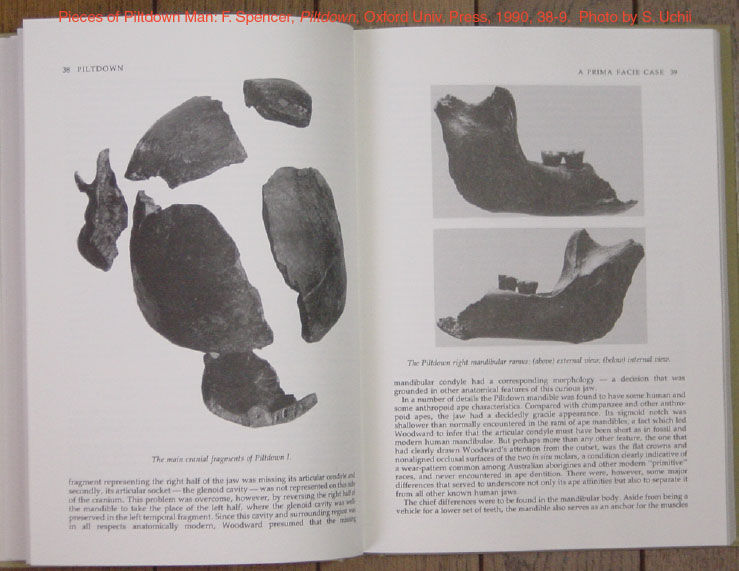![]()
第4章 捏造
1. Kamitakamori
See how a non-Japanese scholar sees the matter.
Charles T. Keally, "Japanese Scandals--this time it's archaeology: a preliminary report", http://www.ancienteastasia.org/special/japanarchscandal.htm
2. Piltdown Forgery
We have to understand how it is hard to reconstruct the whole skull from a small number of pieces. See the following picture of the pieces (of the first specimen).

Here are two reconstructions, the left by Arthur Smith Woodward, the right by Arthur Keith. Picture from Ronald Miller's The Piltdown Mystery, S. B. Publications,1998, p. 35 (names added by S. Uchii).

3. Perrin's research
See the following sites:
![]()
(1)Concoction, fabrication, forgery and things like that: These are wrong, but why are they wrong? The reason is derivable from the Ethics of Science, as characterized by me. Review the process of derivation.
(2)Not only that: recall the scientific priority needs recognition by specialists or peers. Thus those who gave recognition to a false and fabricated claim owe a certain responsibility. This also follows from the Ethics of Science, however it may look meager in content derivable from priority.
(3)You may begin to understand the ground for the virtue of intellectual honesty, or integrity, for the scientist, in whatever field of research in science. Priority is an abstract notion (but with a definite normative content), but there are many many ways to protect priority, given various contexts in which priority matters and many people are involved. Hence my distinction between the Ethics of Science and the Ethics for the Scientist.
(4)Find other examples and analyze them. If you find someone wrong, make clear why he/she is wrong, in such specific examples.
Last modified April 18, 2003. (c) Soshichi Uchii.
suchii@bun.kyoto-u.ac.jp